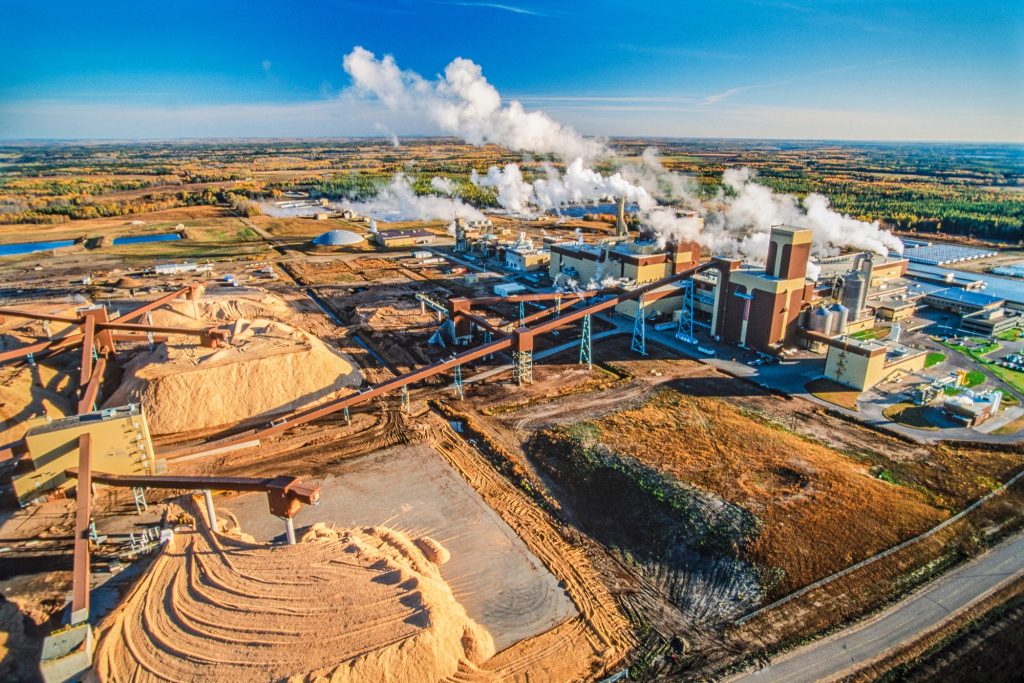
Decarbonizing at Scale with Financial Muscle
In a bold move that combines climate innovation with industrial revitalization, CO280 and JPMorgan Chase have joined forces to launch a large-scale carbon removal initiative in the U.S. pulp and paper sector. This partnership aims to transform biogenic carbon emissions from legacy mills into one of the most cost-effective engineered carbon dioxide removal (CDR) solutions on the market.
With a new offtake agreement officially in place, JPMorgan Chase will purchase 450,000 metric tons of carbon dioxide equivalent (mtCO2e) from a CO280 project located on the U.S. Gulf Coast. The price? Under $200 per ton—a figure that sets a new benchmark for high-integrity, engineered CDR at scale.

The Power of Partnerships: CO280's Scalable Blueprint
CO280’s strategy is simple yet game-changing: retrofit existing pulp and paper mills with carbon capture tech to lock in biogenic CO2 emissions before they enter the atmosphere. These emissions, derived from wood waste, are then stored permanently underground, creating carbon credits that are sold to corporate buyers looking to offset unavoidable emissions.
The technology enabling this? SLB Capturi, an advanced carbon capture system engineered for industrial emitters. By partnering with SLB, CO280 ensures its projects are backed by reliable tech, while maintaining full alignment with measurement, reporting, and verification (MRV) protocols set by leading standard-setters.
Why Pulp and Paper? An Overlooked Decarbonization Opportunity
The U.S. pulp and paper sector might not get the flashy headlines, but it punches far above its weight. According to the American Forest & Paper Association, the industry contributes 5% of U.S. manufacturing GDP and directly employs over 934,000 workers, with another 6 million jobs supported indirectly.
By capturing CO2 from these mills, CO280 is unlocking a _multi-billion-dollar opportunity_ to help the U.S. forest products industry thrive—especially in rural areas that rely on these facilities for economic stability.
Jonathan Rhone, co-founder and CEO of CO280, put it plainly: "We're transforming the economics of the pulp and paper industry, increasing mill revenue and EBITDA."
JPMorgan Chase: Catalyzing Climate Tech at Scale
This isn’t JPMorgan Chase’s first foray into the carbon removal market, but it may be its most strategic. With a growing focus on operational decarbonization and net-zero pathways, the bank is playing a crucial role in scaling real solutions, not just pledging climate goals.
Taylor Wright, Head of Operational Decarbonization at JPMorgan Chase, emphasized the significance of the deal: "CO280's ability to provide near-term, affordable carbon removals at scale is a key catalyst for making high-quality, engineered CDR available to a wider range of buyers."
The bank’s backing also sends a clear signal to the broader market: investing in carbon removal isn’t just about climate, it’s also about long-term competitiveness.

>> In Other News: Desert Mountain Energy Applauds EPA Administrator Lee Zeldin's Approval of Arizona's UIC Primacy Request
Economic Uplift Through Climate Innovation
The impact of this deal reaches well beyond emissions accounting. It’s about boosting industrial productivity, keeping rural jobs intact, and reclaiming U.S. leadership in carbon markets.
Natalie Khtikian, CO280’s Chief Commercial Officer, underscored that vision: "JPMorgan Chase was our earliest supporter—from the beginning they understood our vision to deploy CCS to create value for investors and the people who live and work in mill communities."
As other countries race to subsidize or nationalize CDR infrastructure, the U.S. is taking a market-driven route. Deals like this one demonstrate that when the right technologies meet the right capital, progress isn’t just possible—it’s profitable.
Setting the Standard for Carbon Credit Integrity
One of the most compelling parts of CO280’s model is its adherence to strict sustainability and verification protocols. Biomass used in their projects follows the Frontier Biomass Sourcing Principles and Carbon Direct Biomass Sourcing Principles, ensuring that only residual waste from certified sustainable forests is utilized.
This commitment gives buyers confidence that they’re investing in real, additional, and durable removals, not low-integrity offsets that fall apart under scrutiny.
What This Means for the Future
With over ten CDR projects in the pipeline and a goal of removing 10 million tons of CO2 annually, CO280 is laying the foundation for a new class of bankable, scalable, and high-integrity carbon removal assets. And with strategic backing from JPMorgan Chase, this model is more than just visionary—it’s executable.
This partnership sends a strong message to industries across the board: retrofitting existing infrastructure with modern carbon capture technology is not only good for the planet—it’s good business. As carbon markets mature, and buyers demand higher quality, transparent credits, leaders like CO280 and JPMorgan Chase are proving that clean growth and climate action can absolutely go hand-in-hand.
The race to decarbonize is on, and with CO280 and JPMorgan Chase leading the charge, the U.S. pulp and paper industry may just become one of the most surprising climate success stories of the decade.
Subscribe to the newsletter
Daily decarbonization data and news delivered to your inbox
Follow the money flow of climate, technology, and energy investments to uncover new opportunities and jobs.
Latest issues
-
The CO₂ Pipeline Everyone Said Couldn’t Happen
Inside This Issue 🛠️ Tallgrass Found the CO2 Pipeline Formula Others Missed 🚂 HyOrc & Zeltech Advance Practical Locomotive Retrofit Pathway as U.S. Rail Emissions Face Growing Scrutiny 💰 Secre...
-
How 45Q Credits Revived This Troubled $9B Megaproject
Inside This Issue 💰 How 45Q Credits Revived This Troubled $9B Megaproject 🍁 Commencement of First Phase Operations for a Carbon Capture and Storage (CCS) Project in Canada 🤝 Haffner Energy Secures...
-
The Deal Structure Everyone's About to Copy
Inside This Issue 💼 The Deal Structure Everyone's About to Copy 📈 Exxonmobil Raises Its 2030 Plan – Transformation Delivering Higher Earnings, Stronger Cash Flow, and Greater Returns ⚡ Nextera Wor...
Company Announcements
-
C2X to Deliver 3.6 Million Metric Tons of Carbon Removal to Microsoft Over 12 Years
HOUSTON, TEXAS, December 11, 2025: C2X Ltd. has, through its subsidiary Beaver Lake Renewable Energy LLC (Beaver Lake), signed a long-term agreement with Microsoft for the sale and purchase of high...
-
Sandpiper Chemicals Selects Air Water Gas Solutions as ASU Provider for Its Blue Methanol Facility
Sandpiper Chemicals, LLC is pleased to announce that it has selected Air Water Gas Solutions Inc. as its presumptive industrial gases supplier for its Texas City, TX blue methanol facility. Air Wa...
-
SOUTH SAN FRANCISCO, Calif. — (BUSINESS WIRE) — Ebb, a climate and water technology company, has signed a prepurchase agreement with Google to remove 3,500 tons of CO₂ from the atmosphere. The agre...
-
KBR Awarded Green Ammonia Project by IGNIS in Spain
HOUSTON, Dec. 15, 2025 (GLOBE NEWSWIRE) — KBR, Inc. (NYSE: KBR) announced today that it has been awarded a technology and engineering contract by IGNIS for a new green ammonia facility in A Coruña,...